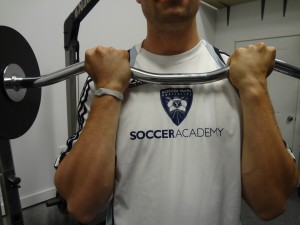From specialized drinks to the latest shoes, athletes are always looking for the next big thing to give them the edge over their competition.

Power Balance Bracelets, often referred to simply as power bracelets, is one product claiming to provide that edge. Simply a silicone wristband with a built-in metal hologram, the power bracelets offer wearers a competitive edge by using “Eastern” techniques that channel natural energy flows.
“In 2006, two brothers with a passion for competitive sports pursued their idea to blend the powers of Eastern philosophy and Western science with Innovative Technologies to deliver products that improve and enhance people’s lives,” the Power Balance website says. “From thousands of professional athletes to millions of aspiring amateurs, weekend warriors and active consumers, Power Balance has become a brand as powerful as the athletes who wear its products.”
One of these satisfied customers is Timothy Fitt, a business management major at BYU. However, he doesn’t wear his power bracelet for any biological effect. He wears it as a part of his image.
“Power bracelets are much more of a fashion statement than an actual tool in my opinion,” Fitt said. “The thing that seems to set them apart is that they are an additional item almost to show your quality as an athlete. They don’t break, and they are relatively cheap but can show your quality on and off the field.”
He believes, though, any effect the bracelet may have on athletics is purely psychological.
“I’ll admit that the bracelets are a complete placebo effect,” Fitt said. “I don’t believe they really actually do anything for us. They’re comfy and a trendy way to spruce up your outfit, but I don’t think they’re a benefit.”
Not even the Power Balance company has offered proof the bands actually have any benefit.
“While we have received testimonials and responses from around the world about how Power Balance has helped people, there is no assurance it can work for everyone,” the company said on its website.
Dominique Dawes, a former Olympic Champion, tested the power bracelets in 2010 while working for Yahoo! Weekend News. Dawes conducted a double-blind test where subjects were given bracelets wrapped in tape so they couldn’t distinguish between the power bracelets and the fakes. Dawes concluded the power bracelets had no effect; the results for the power bracelets were the same as for the fakes.
Gary Mack, department chair in the Exercise Sciences Department at BYU, doesn’t believe the power bracelets do anything for athletes.
“They are not worth the metal they are made of,” Mack said.
In 2011 the Royal Melbourne Institute of Technology did a similar study, and it also found there was no real difference between people who wore the bracelets and those who wore placebos.
Because of this particular study and many like it, the Australian Competition and Consumer Commission required the Australian distributor of the power bracelets to issue a formal statement admitting it “engaged in misleading conduct” in 2010. Because the company was unable to back its claims with any scientific research or proof of its own, many other countries such as Italy and Holland followed suit and filed lawsuits against the Power Balance company. Some of these lawsuits forced the company to pay for corrective advertising.
As a result, the company has made changes to its website.
“We make no claims and let the consumer decide based on their experience,” the website says. “That’s why we offer a no-questions-asked, money-back guarantee. If you’re not satisfied, just return the product within 30 days with proof of purchase.”




